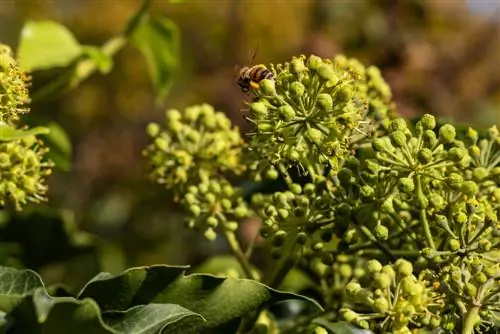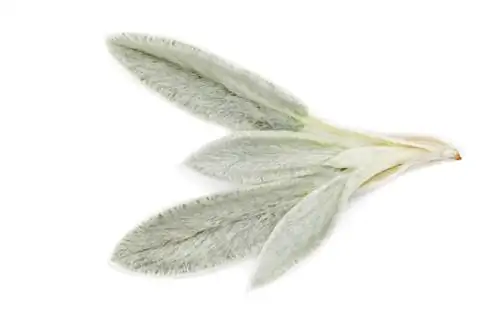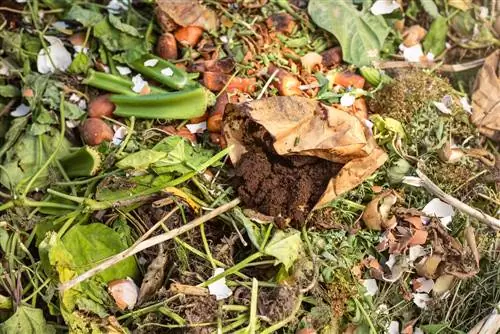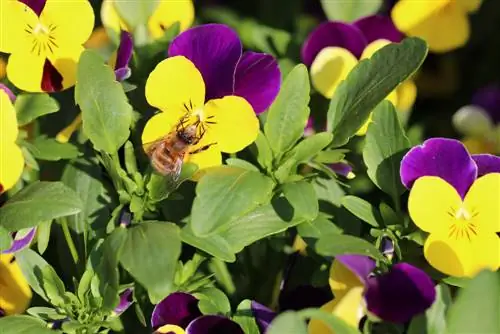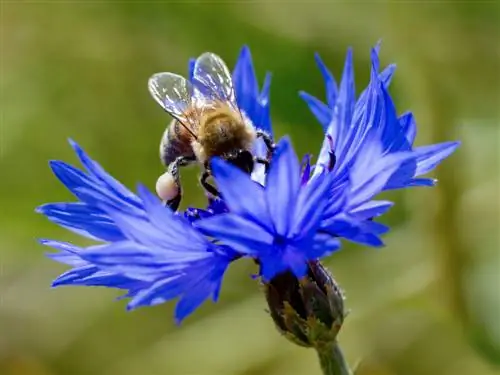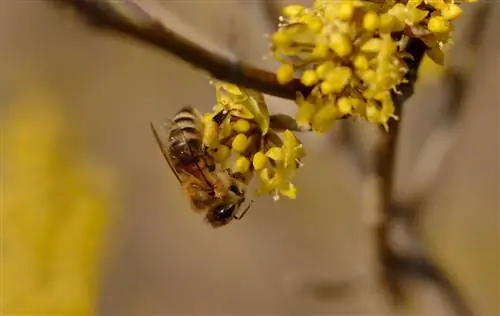- Author admin [email protected].
- Public 2023-12-16 16:46.
- Last modified 2025-01-23 11:22.
Ivy beautifies shady places in the garden with its dark green foliage and climbs old walls with its long tendrils. When mature, it produces many yellowish flowers. But are these actually as nutritious for bees as is often said?
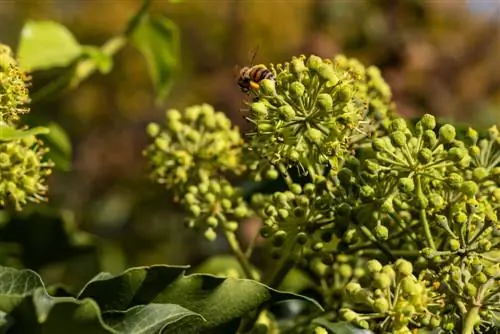
Why is ivy important for bees?
Ivy provides bees with a valuable source of food through its abundant yellowish-green flowers that provide nectar and pollen. The flowering period extends from September to November, making it an important source of food in an otherwise barren season for bees and other insects.
Why is ivy so valuable for bees?
The yellowish-greenflowersof the ivyprovide plenty of nectar and pollen. They are also formed at a time of year when bees Otherwise you won't be able to find much food. This makes Hedera helix an important traditional plant.
The nectar has a very high glucose content and is therefore nutritious. It is occasionally reported that the ivy nectar stored in the beehive crystallizes too quickly. However, this is not a problem for the bees, as they mostly use the ivy nectar immediately.
When does ivy form the flowers that are important for bees?
The flowering period of Hedera helix extendsfrom September to November. Then a continuous humming and humming can be heard from the ivy, because besides bees there are also feasting:
- Wild bees,
- Hoverflies,
- Fold wasps,
- Butterflies,
- Bumblebee Queens
on nectar and pollen.
The insects are important pollinators of ivy. The flowers develop into almost black berries by winter, which are valued as food by many birds.
Why is only the old form of ivy valuable to bees?
Only from the age of around ten yearsdoes the ivy form the yellow-greenumbele flowers that are so popular with bees.
You can also recognize the so-called age form by the following features:
- Lignification of trunk and shoots.
- Hardly any tendrils left.
- The shape of the foliage changes. This is no longer jagged and shows a pretty heart shape.
If you don't want to wait many years for ivy to bloom, you can purchase the older form commercially. This so-called shrub ivy no longer climbs, but forms dense bushes.
Are all types of ivy bee-friendly?
Every ivy cultivated outdoorsis one of thevaluablefood plantsfor bees after a certain ageand wild bees.
This also applies, for example, to:
- Large-leaved Irish ivy (Hedera helix ssp. hibernica)
- Gold ivy with its yellow-variegated foliage (Hedera helix 'Gold Child')
- Pointed-leaved ivy (Hedera helix 'Shamrock')
- Common ivy (Hedera helix).
Tip
Ivy is extremely adaptable
The ivy tolerates both dry and slightly acidic soil and, although it prefers the shade, can even cope with sunny locations if the soil is sufficiently moist. This means that a corner can be found in almost every garden for this plant, which is so valuable for bees and other insects.

